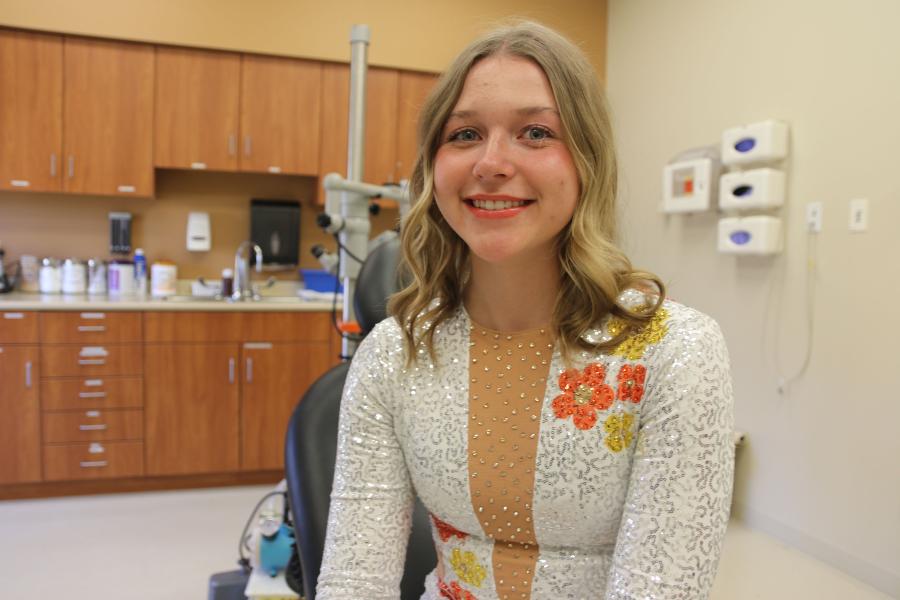Olivia Storlie

Olivia Storlie got an unlucky break . . . and then a lucky one.
Liv is a dancer. While learning a new dance with a turning leap, Liv landed wrong on her left knee. “It was painful,” she says.
Liv assumed she had dislocated her kneecap, a common injury for athletic dancers. It happened to her right knee a few years ago; surgery fixed that.
This time, Liv rested and iced her swollen knee, and wore an immobilizer to keep the joint still. “I assumed it would be fine in a week or two, but the swelling didn’t go down and it was really achy,” she says.
Instead, the swelling got worse, to the size of a soccer ball. At NH+C’s Orthopedics clinic, Ashley Scharping, MPH, PA-C ordered x-rays that revealed a surprise fracture of the patella bone. Then an MRI showed that a large piece of cartilage had been sheared off Liv’s patella.
Liv would be out for the season.
Orthopedic surgeon Greg Erickson, MD repaired and reconstructed Liv’s knee, using a cutting-edge technique: autologous cartilage transplantation. Dr. Erickson took cartilage and plasma from Liv’s body. Her platelet-rich plasma, which provides growth factors, was combined with her own cartilage cells, which were then used to repair the cartilage defect on the back of her kneecap.
This gold-standard procedure relies on the body’s own tissue and provides a single-stage option for treating cartilage injuries in the knee. It eliminates the need for multiple surgeries and reduces the risk of arthritis down the road. That’s a key consideration for a young athlete.
“It’s important that Liv has a knee that functions well for the rest of her life,” says Liv’s mom Dr. Jessica Storlie, an Emergency Department physician.
Dr. Erickson repaired the fractured patella bone and grafted the cartilage behind the kneecap. Liv went home the same day.
“Everyone made it super comforting and easy because they knew I was nervous,” Liv recalls. “I took a few days off of school, rested a lot, then went back to school with immobilizer and crutches.”
Liv progressed through physical therapy quickly. But an important part of her recovery was to let the cartilage graft properly heal, growing onto her kneecap. So even though she hit the usual PT benchmarks for strengthening, it was too soon to start dancing.
Liv was devastated to sit out the whole season, her second year on the Farmington Tigers dance team. “But we understand this is a procedure that’s not commonly done on 14 year olds, and we trust the surgeon and his approach on that,” Liv’s mom says.
Liv is working her way back, with stretches and strengthening and low-level moves to keep the body mechanics. She’ll progress to jumps and leaps and complex combos, with patience.
It’s a balancing act for a teen athlete to focus on fixing the injury now while also thinking about the years ahead, to stave off future complications.
“We want her best years to be ahead of her and not behind her,” Liv’s mom says. “That’s how we were able to convince her to slow her roll and not try to work out too hard and get back into dance too soon.”
Dr. Erickson set the pace. “As soon as Liv started saying, ‘What if instead’ he would say, ‘No, we’re going to do it this way,’” Liv’s mom laughs. “He was polite, but he was concise and the expectations were very clear.”
Liv agrees. “He doesn’t try to sweet talk how long recovery will be. He gets to the point.”
Liv’s advice for young athletes who get injured: “Take it slow, and don’t push your body. If something feels unstable, don’t try to hide it. Tell somebody, because it could lead to something bigger.”
Take it one step at a time, with an eye on the horizon.
Just like dancing.
